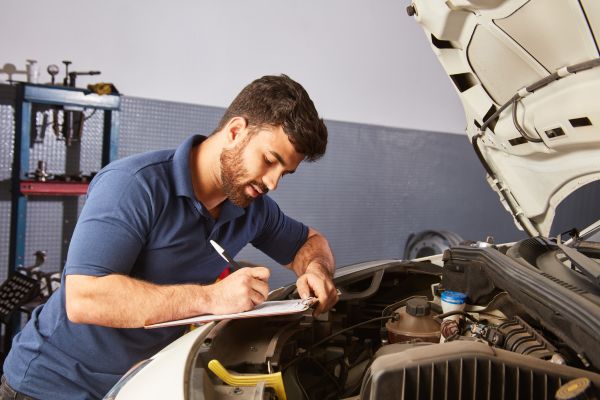Keeping your vehicle in excellent condition goes beyond just fueling it up and hitting the road. Regular care and attention are vital, and understanding the importance of a basic car maintenance checklist can make the difference between a safe ride and unexpected breakdowns. Whether you’re a seasoned driver or just starting your automotive journey, maintaining your vehicle with a proper routine will not only prolong its life but also enhance safety and performance.
Why a Basic Car Maintenance Checklist Matters
Car maintenance isn’t just for car enthusiasts or mechanics. Every driver benefits from staying on top of routine checks. A well-maintained car ensures better fuel efficiency, reduces the likelihood of costly repairs, and most importantly, keeps you and your passengers safe. When ignored, even minor issues can evolve into major problems. That’s why adopting a proactive approach through a basic car maintenance checklist is essential for every vehicle owner.
Neglecting maintenance doesn’t just affect performance—it also impacts your safety on the road. Worn-out tires, low brake fluid, or an unchecked engine light could result in hazardous situations. Regular checkups offer peace of mind and help ensure that your vehicle responds the way it should, especially in emergency scenarios.
Inspecting the Engine and Oil Levels
The heart of your vehicle lies under the hood. Regularly inspecting the engine and monitoring oil levels is a critical part of any basic car maintenance checklist. Engine oil lubricates moving parts, prevents overheating, and keeps your engine clean. If the oil becomes dirty or levels drop too low, your engine could face serious damage.
Checking your oil doesn’t require special tools or training. Most vehicles are equipped with a dipstick that allows you to gauge oil levels and assess the oil’s color and consistency. If it’s dark or gritty, it may be time for an oil change. Additionally, listening for unusual noises or noticing sluggish performance can be signs that your engine needs attention.
Monitoring Tire Health and Pressure
Tires are your car’s direct connection to the road, and their condition significantly influences handling, fuel economy, and overall safety. As part of your basic car maintenance checklist, make a habit of inspecting your tires for wear, cracks, or embedded debris.
Maintaining proper tire pressure is equally important. Underinflated or overinflated tires can affect your car’s traction and braking ability, especially in adverse weather conditions. Many modern cars have built-in tire pressure monitoring systems, but it’s still wise to manually check pressures regularly. Properly inflated tires improve fuel efficiency and help you avoid unexpected blowouts or flats.
Checking Brake System Functionality
Brakes are arguably the most critical safety feature of any vehicle. The ability to stop quickly and reliably can mean the difference between a near-miss and a collision. For this reason, examining your brake system is an indispensable part of a basic car maintenance checklist.
Signs of brake issues can include squealing noises, vibrations when braking, or a spongy brake pedal. Even if your brakes seem to be functioning normally, regular checks for brake fluid levels, pad wear, and rotor condition are essential. Addressing brake concerns promptly can save you from both danger and expensive repairs.
Examining the Battery and Electrical Components
Car batteries don’t last forever, and failing to maintain them can leave you stranded at the worst possible moment. As you follow your basic car maintenance checklist, ensure that the battery terminals are clean, tight, and free from corrosion. A weak battery can cause starting issues, flickering lights, or even system malfunctions.
Alongside battery checks, examine other key electrical components. Lights, wipers, and dashboard indicators all play vital roles in keeping you informed and safe. If a light flickers or fails, it could signal a bigger issue or simply a need for replacement. Regular testing helps you catch electrical issues before they escalate.
Maintaining Fluids Beyond Engine Oil
While engine oil is vital, your car depends on several other fluids to operate smoothly. These include coolant, transmission fluid, brake fluid, windshield washer fluid, and power steering fluid. Overlooking these can result in overheating, system failure, or compromised safety.
Including fluid checks in your basic car maintenance checklist helps keep every part of your vehicle running efficiently. Coolant regulates engine temperature, while transmission fluid ensures smooth gear shifting. Brake fluid, essential for stopping, must remain at optimal levels, and windshield washer fluid ensures clear visibility during adverse weather.
Keeping the Air Filters Clean
Air filters, both for the engine and the cabin, play a crucial role in your car’s health and your driving comfort. The engine air filter prevents debris from entering the engine, while the cabin air filter maintains air quality inside your vehicle. Dirty or clogged filters can affect fuel efficiency, engine performance, and even the effectiveness of your air conditioning system.
As you perform your basic car maintenance checklist, don’t overlook the air filters. If they appear discolored or blocked with dust and particles, it’s time for a replacement. Clean filters help your engine breathe better and create a more pleasant experience for passengers.
Inspecting the Belts and Hoses
Belts and hoses may seem minor, but they’re vital to your vehicle’s operation. They control components such as the alternator, water pump, and air conditioning system. A worn or broken belt can cause serious damage and leave you stranded. Hoses, on the other hand, carry important fluids and must be free of leaks or cracks.
Make visual inspections a routine. Look for fraying belts, bulging hoses, or signs of leakage. Replacing these parts before they fail is far more convenient and cost-effective than dealing with a roadside emergency.
Wiper Blades and Visibility
Clear vision is essential while driving, particularly during rain, snow, or dusty conditions. Wiper blades degrade over time, becoming brittle or leaving streaks. If you notice they’re not clearing your windshield effectively, it’s time for a replacement.
Including this in your basic car maintenance checklist ensures you’re always prepared for inclement weather. Good visibility isn’t just about comfort—it’s a matter of safety.
Understanding the Value of Routine Inspections
Following a basic car maintenance checklist doesn’t require mechanical expertise—it simply demands consistency. Even if your car feels fine, routine inspections catch problems early, improve performance, and reduce the likelihood of sudden failures. Staying ahead of maintenance allows your vehicle to operate efficiently and reliably.
Moreover, regular maintenance can enhance the resale value of your car. A well-kept vehicle with a documented maintenance history appeals to buyers and gives you negotiating power when it’s time to upgrade.
Final Thoughts on Your Car Care Routine
Maintaining your car with a structured and consistent approach isn’t just a good habit—it’s a smart investment in your safety and your vehicle’s longevity. A well-executed basic car maintenance checklist offers peace of mind and protects you from unexpected breakdowns, dangerous situations, and costly repairs.
By taking time to understand and apply regular maintenance practices, you’re not only preserving your car’s performance but also embracing the responsibility that comes with vehicle ownership. After all, when your car runs smoothly, your life moves forward uninterrupted—and there’s nothing more reassuring than that.



